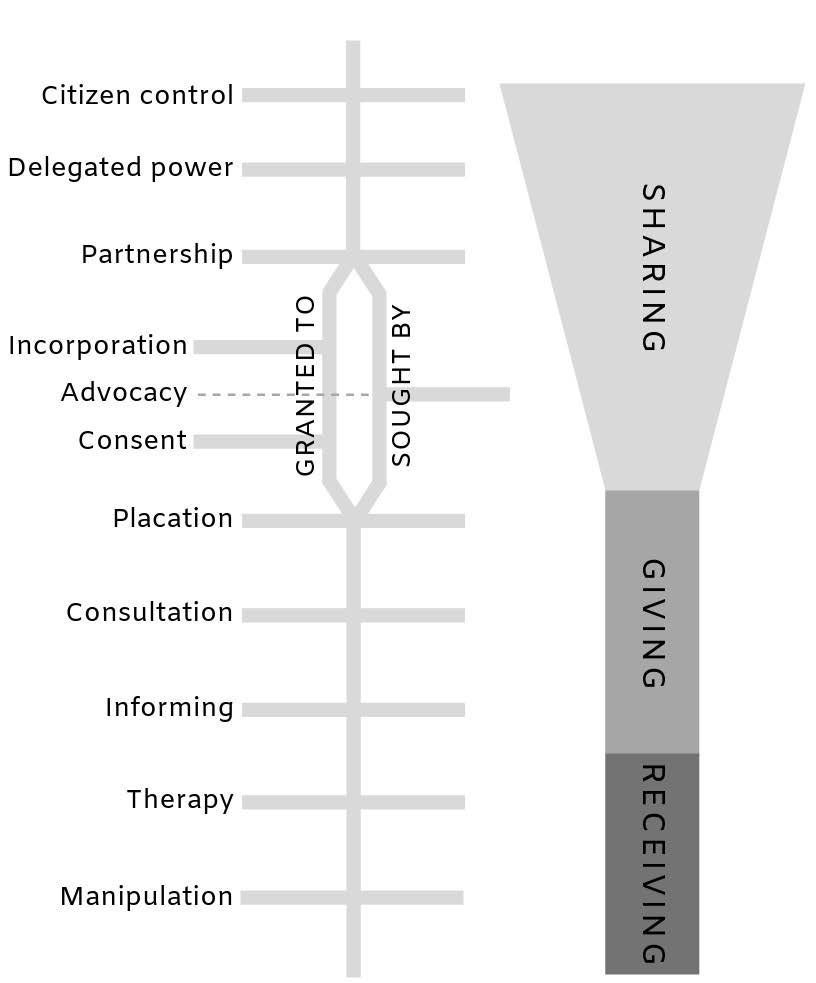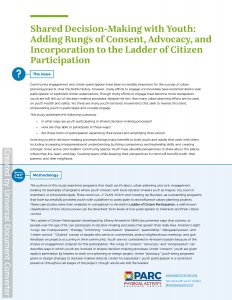Shared Decision-Making with Youth: Adding Rungs of Consent, Advocacy, and Incorporation to the Ladder of Citizen Participation
By: Nisha D. Botchwey, Nick Johnson, L. Katie O’Connell from Georgia Institute of Technology and Anna J. Kim from San Diego State University
Community engagement and citizen participation have been incredibly important for the success of urban planning projects. Over the field’s history, however, many efforts to engage communities have restricted democratic participation or exploited citizen expectations. Though many efforts to engage have become more transparent, youth are still left out of decision-making processes, despite the fact that many urban planning efforts are focused on youth health and safety. Yet there are many youth-centered movements that seek to reverse this trend, empowering youth to participate and civically engage.
This study addresses the following questions:
- In what ways are youth participating in shared decision-making processes?
- How are they able to participate in these ways?
- Are these forms of participation expanding their power and amplifying their voices?
Involving youth in decision-making processes brings many benefits to both youth and adults that work with them, including increasing intergenerational understanding, building competency and leadership skills, and creating stronger, more active, and resilient community spaces. Youth have valuable perspectives to share about the places where they live, learn, and play. Creating space while keeping their perspectives in mind will benefit youth, their parents, and their neighbors.
Ladder of Citizen Participation

This figure is a recreation of Arnstein’s original ladder, with new rungs describing youth participation inserted between “placation” and “partnership.”
This section of the ladder is divided along two tracks, depending on whether the power to participate is “granted to” youth or “sought by” youth.
On the right is a representation of how youth interact with information from the decision-making process. Though these new rungs do not fall under “citizen control,” they do facilitate information “sharing” as opposed to “receiving” or “giving,” which align with lower forms of participation.
Results
Overall, these programs expand participation for youth, but each in a different way. Youth in Y-PLAN advise on plans or designs for a site, sharing their perspective and knowledge of community and proposing solutions they believe would benefit their community. This style of participation is called “consent,” based on how adults allow youth to contribute.
Youth in YEAH! develop plans through various activities, with the intention of presenting their ideas for improvement to a decision-maker. Youth choose their own projects to undertake that affect their community. This style of participation is called “advocacy,” based on youth petitioning decision-makers for specific actions.
Youth in Growing Up Boulder are considered a formal part of the planning structure and provide their perspective and vision for their communities from start to finish. This style of participation is called “incorporation,” based on how integrated youth are to the process.
These rungs fall above “placation” on Arnstein’s ladder, which is the highest level of “tokenistic” participation. Youth’s feedback is considered in earnest by adults. Yet they fall below “partnership” on Arnstein’s ladder, which is the lowest level of participation reminiscent of “citizen control.” Youth are still not full partners because without adult “allies” helping them gain access to decision-making processes, they would still be excluded. Youth programs that encourage civic participation are becoming more popular. Typically, these programs enable youth to engage civically through adult “allies” or proxies.
Findings from this lay summary are available in the full article, published in Journal of the American Planning Association:
Botchwey, N.D., Johnson, N., O’Connell, L.K., & Kim, A.J. Including Youth in the Ladder of Citizen Participation: Adding Rungs of Consent, Advocacy, and Incorporation. Journal of the American Planning Association. 2019; 85:3, 255-270. https://doi.org/10.1080/01944363.2019.1616319
Suggested Citation for Lay Summary:
Botchwey, N, et al. Shared Decision-Making with Youth: Adding Rungs of Consent, Advocacy, and Incorporation to the Ladder of Citizen Participation. A Lay Summary. San Diego, CA: Physical Activity Research Center and Atlanta, GA: Georgia Institute of Technology; 2019.
This lay summary was made possible with funding from the Physical Activity Research Center. The research that generated the lay summary was led by Drs. Nisha Botchwey and Anna Kim.

